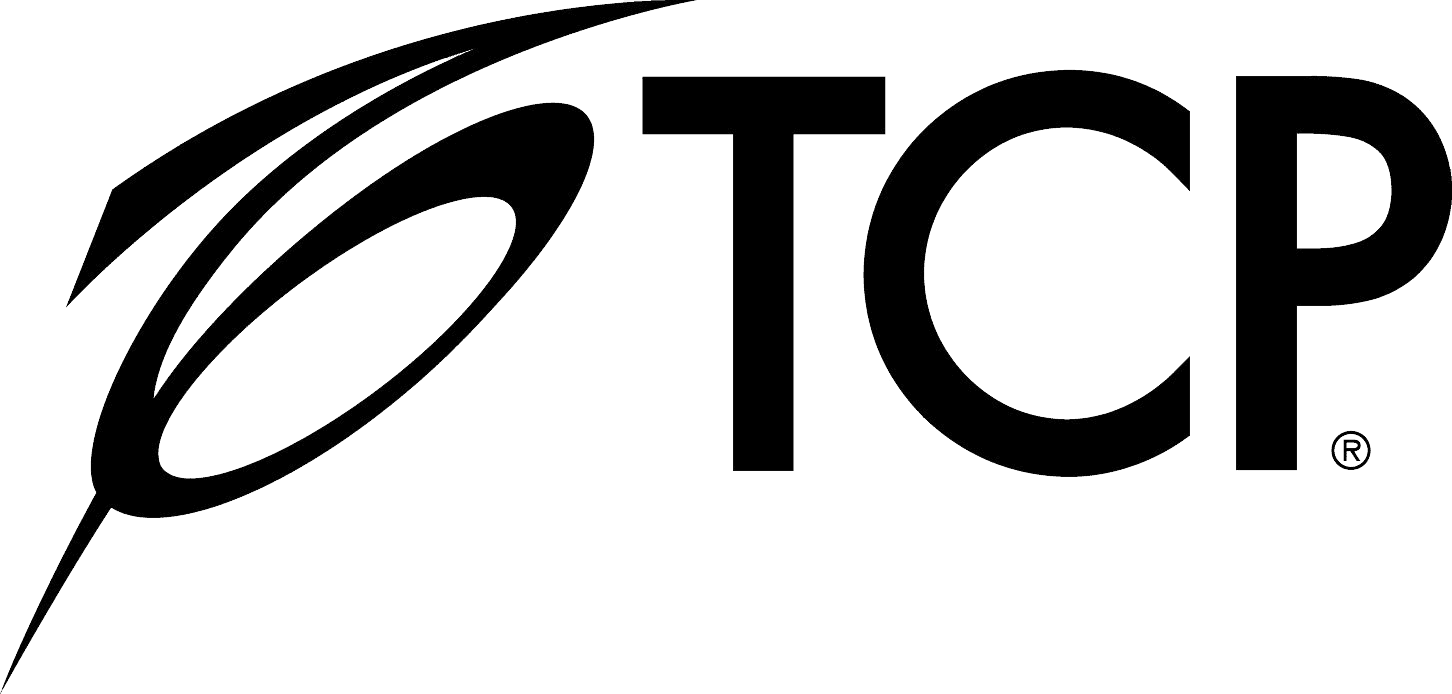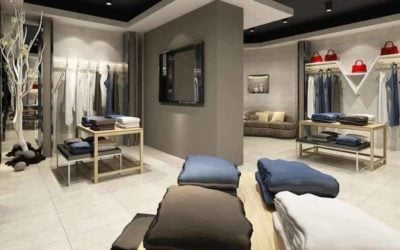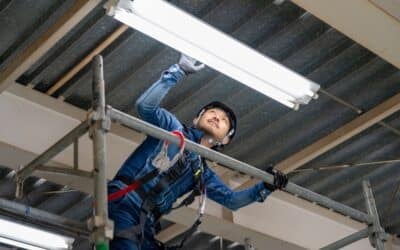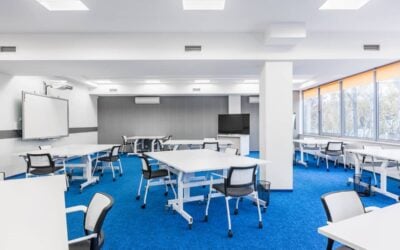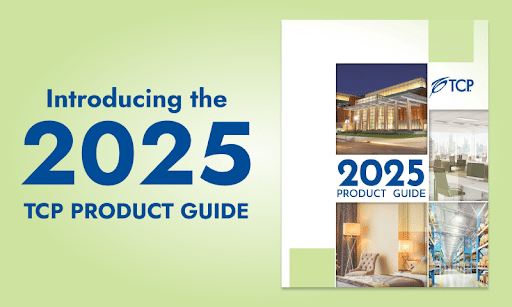Horticulture LED Lights by TCP
At TCP, we’ll help you choose which horticulture lighting products are best for your needs. The average LED bulb is not designed for plant growth—instead, you’ll need special LED grow bulbs. We’ll make those products just for you, then help you design a custom commercial grade horticulture layout.
Below, you’ll find important information to consider when designing your LED horticulture layout with us.
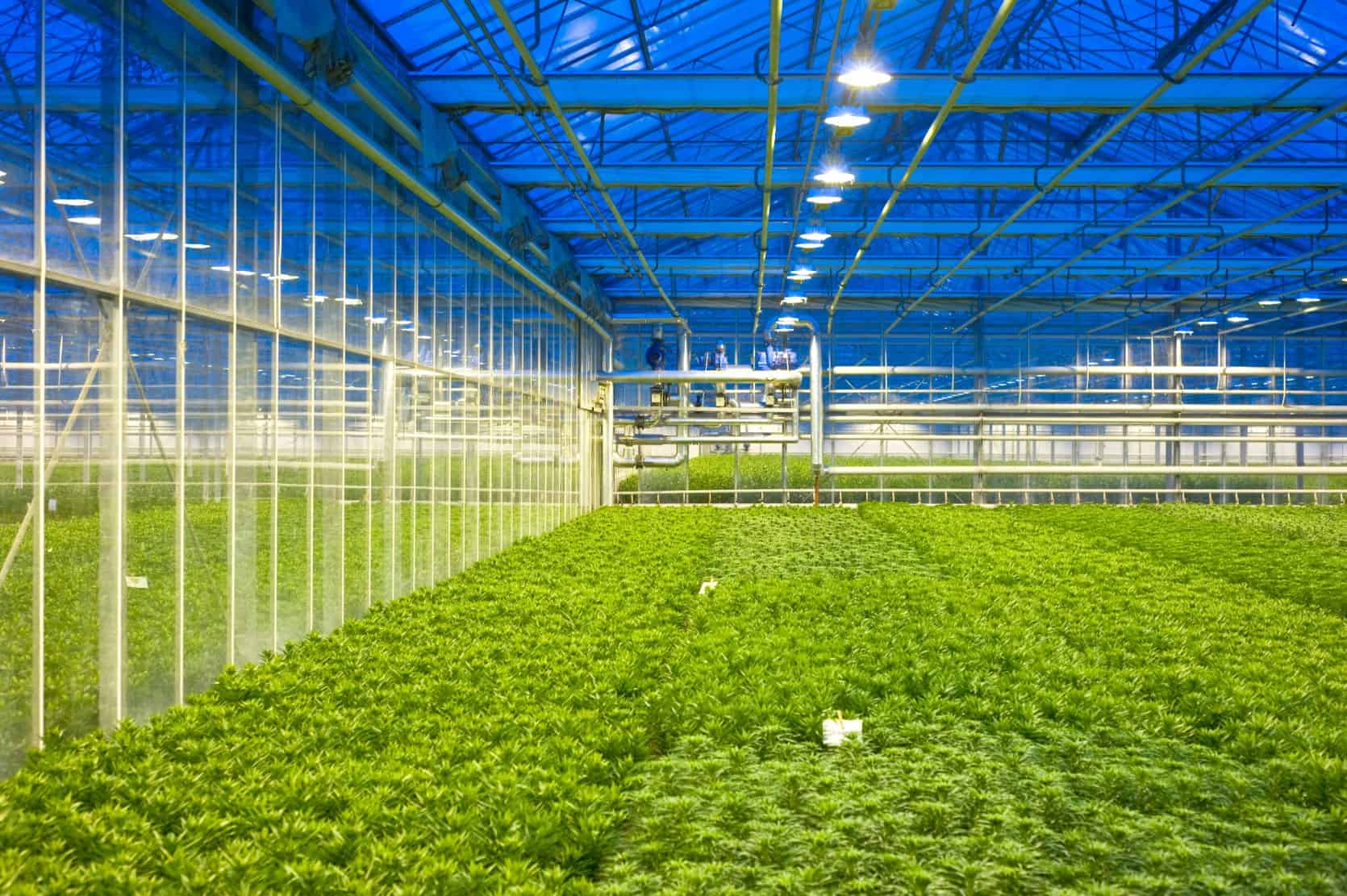
Types of Grow Lights for Scale
When it comes to lighting a large quantity of plants for optimal growth, the two most popular options are:
- LEDs (Light Emitting Diodes)
- UFO Lights
- High Bay Lights
- HIDs (High-Intensity Discharge)
- Metal Halides
Some people also use fluorescent grow lights to grow plants, but this is typically only effective for small-scale home growing.
HIDs are the historical leader in horticultural lighting, but as horticulture LED lights become more advanced and more widely available, they are the increasingly popular choice for indoor gardening.
LED Grow Lights
Before LED grow light fixtures came into the picture, plant growth for indoor gardening was mostly supported by HID lights, including metal halide bulbs and high-pressure sodium lights.
Since these lights were the most effective option at the time, growers had to overlook their downfalls. HID lights give off a lot of heat, require special light fixtures, and consume a lot of electricity.
Broad Spectrum of Light
Early versions of LED grow lights contained only red and blue light, rather than a broad spectrum of light. They also were not as powerful as HID lights. Now, with further innovation, LED lights are available in a full spectrum of color and with higher wattage diodes.
Higher wattage and a broader range of light means that your plants grow faster, are healthier and yield more fruit.
LEDs with full spectrums of lighting also ensure that your grow lights can nurture your indoor plants from the seedling phase, to the flowering stages, all the way through to the point of harvest. Since they’re getting every type of light they need, all you have to do is change the amount of light exposure for your plants.
Advanced LED lights can also emit specific ranges of different wavelengths. This means that light can be tailored to growing phases, as well as your goals as a grower.
Energy Efficiency
Large-scale, industrial growers love LED light because of its advanced energy efficiency. Since grow lights are used in such high quantity and frequency, they can save growers quite a bit in the long run. The initial investment in LED lighting is paid off quickly by the energy bill savings.
Calculate Your LED Return On Investment
LED grow lights can last more than 50,000 hours—that’s double the average lifespan of typical high-pressure sodium light. Horticulture LED lights use half the electricity but last five times as long as fluorescent bulbs.
At the large scale required for industrial growing, it is not hard to see how the savings would add up when you choose LED grow lights.
High-Intensity Discharge
LED grow lights encourage healthy plant growth due to their great light intensity. While home growers can sometimes find success with a fluorescent grow light, large-scale and industrial growers prefer LEDs. Why? LED plant lights can achieve higher light intensity per square foot.
With LED grow lights, you won’t need to set up any kind of reflector to ensure that light reaches your plants. LED light is emitted directly toward your plants, rather than dispersed in a wash throughout the room.
That said, plants that thrive in dispersed, less directional light, can also thrive under an LED lamp. Certain lamp styles, like High Bay LED lamps, are effective when plants need a wash of light that reaches every leaf evenly.
Low Heat
When you have a lot of lights in close proximity—which, in industrial growing, you certainly do—heat production becomes a big consideration in the quality and usability of a light.
Thankfully, LED bulbs are known for producing very little heat when compared to other grow light fixtures.
Another advantage of LEDs? They produce very little heat compared to other bulbs – an issue that can become problematic when you have a lot of lights in a small space. Too much heat in a room can be uncomfortable for humans, of course, but plants may suffer too.
Overheated plants tend to dry out quickly, and leafy greens, flowers, or fruits may shrivel and discolor. These are all indicators of an unhealthy plant. To protect the health of your harvest, make sure your horticulture lights are not giving off too much heat.
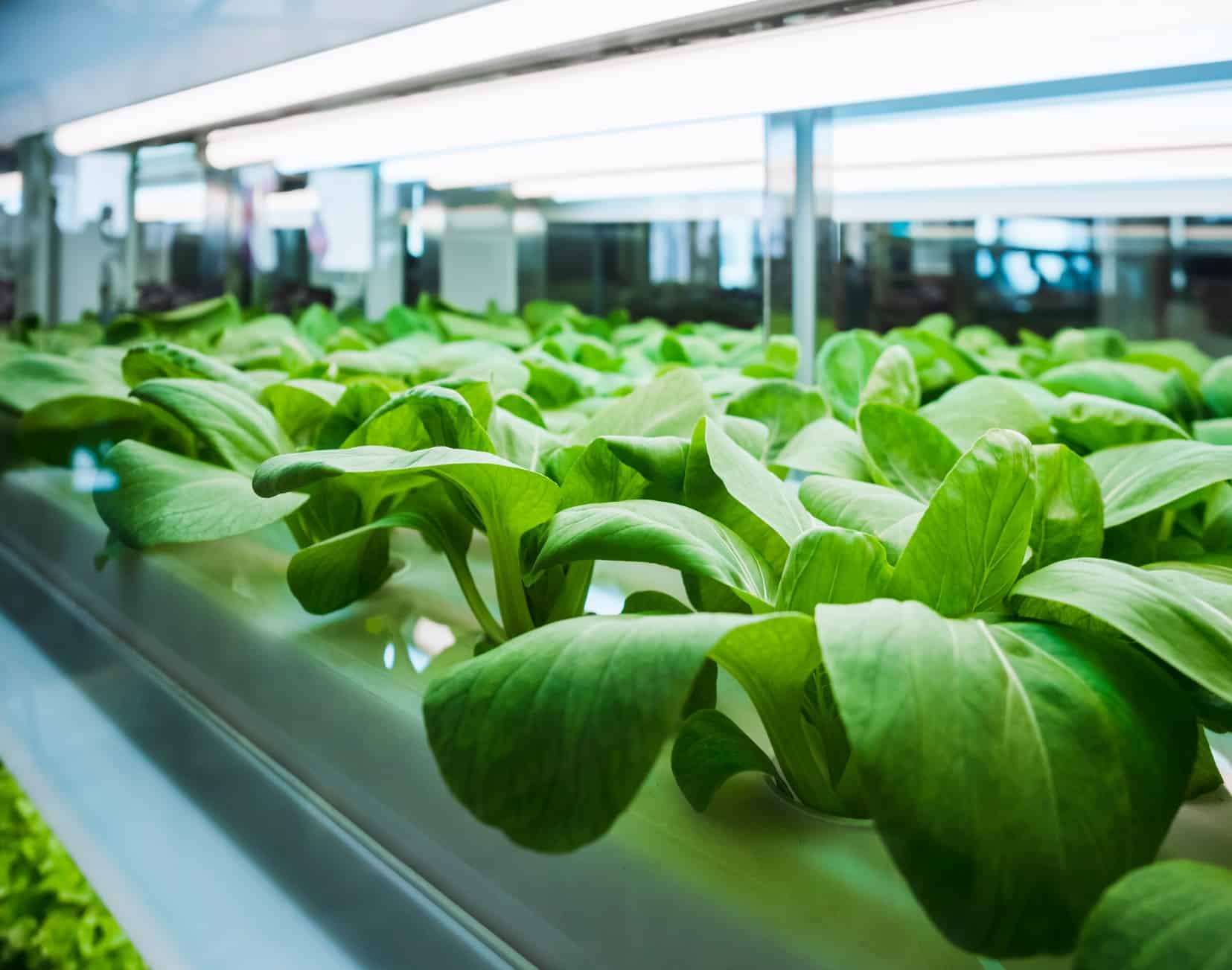
Styles of LED Lighting for Horticulture
High Bay Grow Lighting
High bay grow lighting is a staple of any large-scale indoor growing facility. Mounted above plants, from a ceiling or grating, these lights cast a nourishing wash of broad-spectrum light across your plants. This straight down lighting helps new sprouts build strong bases and avoids sun tilt.
UFO Lamps
UFO LED lamps look exactly as you would expect them to: like unidentified flying objects.
UFO lamps are small, round discs. Unlike high bay lighting, which covers a large space from above, UFO lights concentrate light on compact areas. Their size allows you to tailor your lighting layout to great detail. For example, UFO lamps can be mounted to light lower leaves of plants, which may be blocked from ceiling-mounted lights by upper leaves.
HID Grow Lights
To understand the benefits of LED grow lights, it can help to understand the history of indoor planting.
HID lighting, or high-intensity discharge lighting, is a big part of that history. For a long time, these lights were growers’ top choice when it came to maximizing plant growth. Their low initial cost was appealing to growers, especially with narrow options between HIDs and fluorescent bulbs.
HID lights can be broken down into two categories: metal halide lights, and high-pressure sodium lights. Metal halide lights became popular for indoor growing in the 1960s and are made similarly to mercury vapor lamps.
Metal Halides versus LEDs
Metal halides typically last up to 20,000 hours, while LED grow lights last 50,000 hours, on average. Metal halides emit significant heat—enough to severely burn skin if touched, so caution is advised.
Metal halides also require significant wait times when starting up or shutting down, so growers must plan carefully and run metal halides for longer periods of time than LEDs. In fact, metal halide lights have the longest warm-up period of any light on the market. LEDs, on the other hand, can be switched on and off at will.
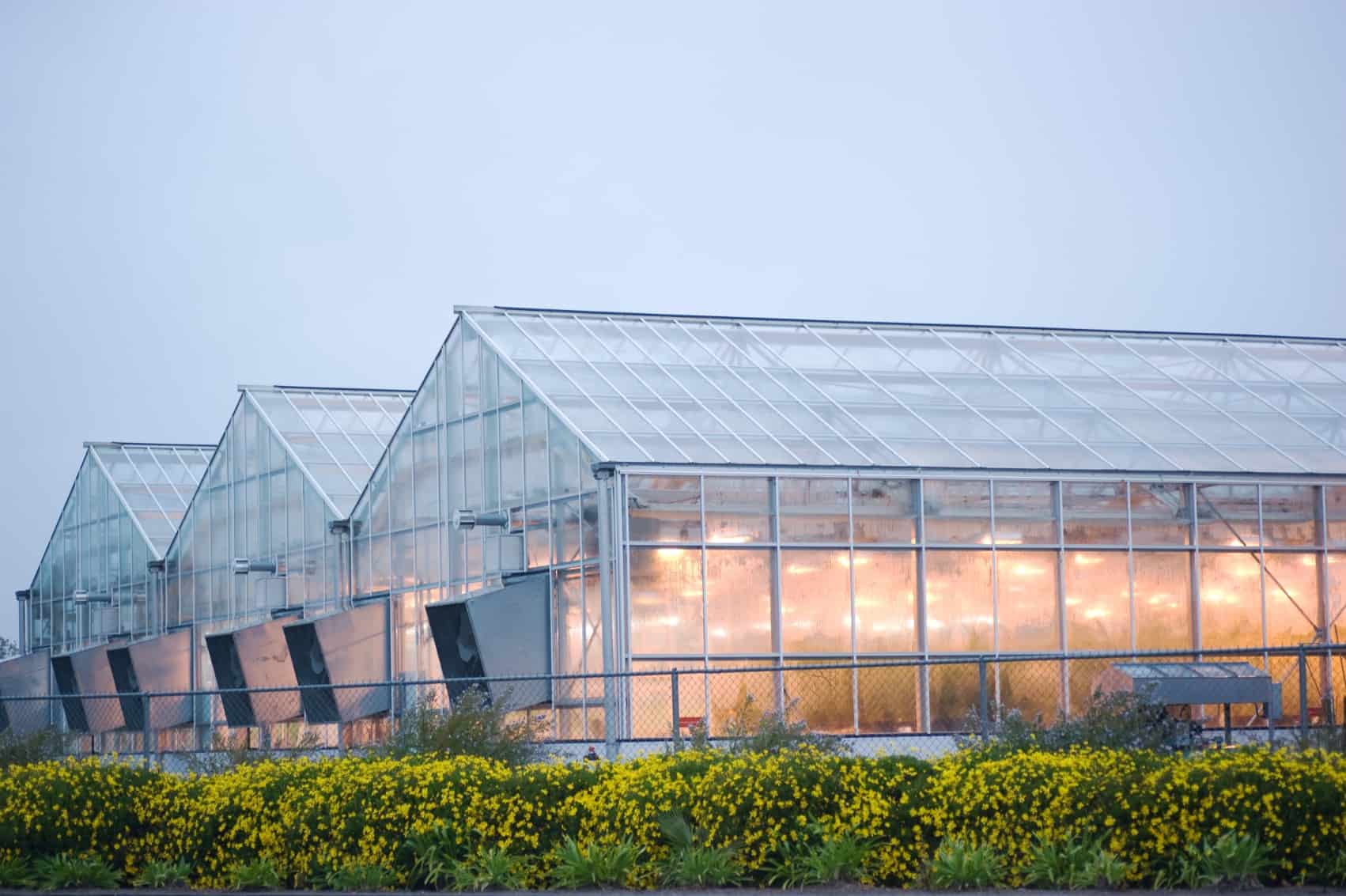
Final Factors to Consider
Placement
Along with light color, placement is an important part of growing healthy, successful indoor plants.
The inverse-square rule is handy for deciding where to place your grow lights: the amount of light that is lost in space grows exponentially the higher your lights are hung above your plants.
So, if you double the amount of distance between your grow lights and your plants, the plants will receive only one-fourth of the amount of light.
For grow lights that emit a lot of heat, like HID grow lights, this can be a problem. You have to suspend them far away from your plants, so the heat does not damage them. So, some lost light has to be accepted.
For horticulture LED lights, however, high heat emission is not a great concern, so neither is light loss. Plants that need intense, direct light can be kept close to LED lamps without worrying about scorching or overheating.
Color Temperature and Timing
Different plants will prefer different styles of lighting. We understand that lighting plans for horticulture sometimes need to cater to a variety of plants, or be optimized for one specific crop.
Green light is almost never considered when designing LED lights for plants, since they already have a sufficient amount of the green pigment, chlorophyll.
Other colors of light, however, can help growers achieve specific goals when it comes to their indoor plants. Many plant functions can be encouraged by thoughtfully designed lights and lighting layouts. For example, blue light encourages vegetative leaf growth. Add red light to the mix, and plants will happily flower.
Advanced LED technology now makes it possible to customize the color and intensity of light that each of your plants receives, leading to higher fruit yields and healthier plants, from seed to harvest.
Whatever lights are chosen, it’s important that plants still receive a daily period of darkness to engage in their natural cycles. The duration of darkness a plant experiences cues the plant on when to flower or produce new leafy greens.
If you’re looking to design a horticulture lighting layout that will encourage your plants to be as healthy and fruitful as possible, TCP can help. Contact us to begin a conversation about the best setup for your plants.
